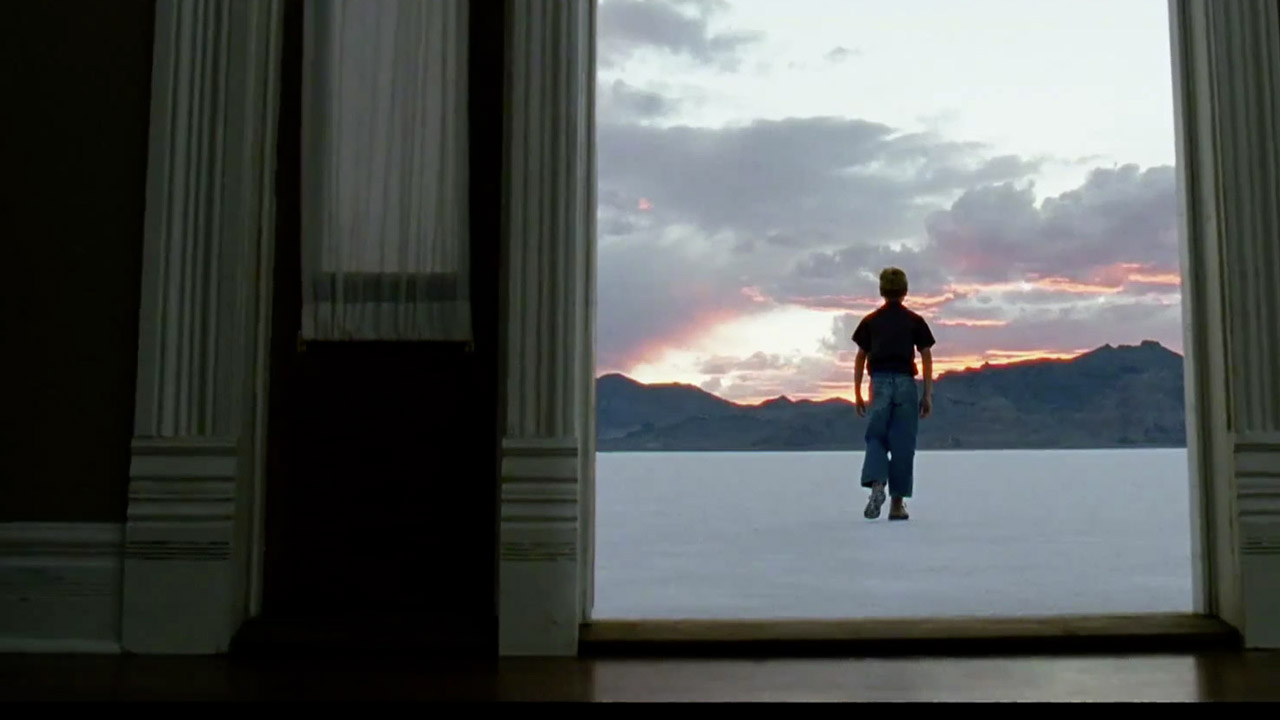The choice of lenses to be used during the filming phase is studied precisely. This is because each lens, even if sometimes we don’t realise it, has characteristics that generate particular sensations in the viewer.
In this article we talk about the wide angle lens. We like to see the effects of its use in a film and it’s a type of lens that we often use in our work.
First of all, what’s a wide angle lens?
A wide angle lens is a type of lens used in cinema, video and photography. Wide-angle lenses are defined as all focal lengths ranging from approximately 14 mm to 40 mm.
These lenses have a wider angle of view than other lenses and are often used to shoot large subjects, even though many directors and photographers use them creatively.
4 movies for 4 different wide-angle lens effects
As we have anticipated, the choice of a lens to shoot a video product is dictated by several reasons. We decided to tell you about some aspects of 4 films in which the directors wanted to communicate something special to us, and could only do so using wide-angle lenses. Obviously, as for our article in which we talk about natural light, we chose 4 films that we really liked a lot!
Roma
“Rome”, a film by director Alfonso Cuarón, is set in the district of Mexico City called “Roma”. One of the most significant features of the film is the maniacal reconstruction of the locations where the story of Cleo, the sweet protagonist, takes place. This film is very descriptive and full of characteristic elements of the 70s, loved by the director. The environment is a fundamental component of the film and is exalted by panoramic scenes and very long static shots. Cuarón needed wide-angle lenses to be able to show his beloved places at their best.
Cuarón, however, wanted to show the locations without distorting the edges of the image (a feature that sometimes may not be appreciated). How to do it?
To overcome this problem in Roma, Arri Alexa 65 cameras that are medium format were used. A medium format camera is characterized by a larger sensor than the other types (such as Full frame, Super35 or APSC) and therefore generates an effect contrary to that of the others.
In fact, a reverse crop factor is applied to the optics that are mounted in medium format chambers and so, for example, a classic 50mm becomes approximately a 25mm.
In this way you can obtain the same optical properties of a 50mm (like the absence of edge distortion) but with an angle of the field equal to those of a wide angle such as 25mm.
Basically, we can best show the locations we see in a film without too much distortion.
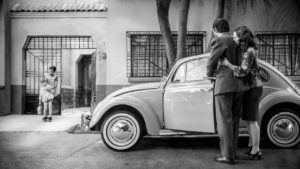
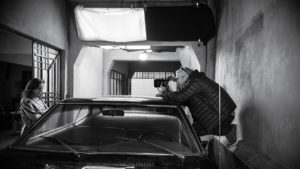
Blade Runner 2049
The film “Blade Runner 2049” by Denis Villeneuve presents many very wide shots, where the use of the wide angle is fundamental. This film particularly impressed us because it managed to create an important contrast between the wide spaces that are shown and the feeling of suffocation and insecurity that the viewer feels watching it (how not to mention the scene where Agent K walks in the desert?). How was this possible?
In this particular scene, we cannot see the horizon line. This stylistic choice does not allow us to understand the fate of that world.
The environment and locations of the film are clearly depicted, but the subject often appears small in comparison to them.
Even in the interior spaces, for example in the parts where Agent K enters Wallace Industries’ headquarters, the character is often held in the centre of the scene, surrounded by very imposing and symmetrical architecture, which conveys an idea of perfect order and nobility, of greatness. The use of a photograph composed of very strong lights, with colours tending towards yellow and gold, also contributes.
The combination of technique, directing skill and the choice of imposing and elaborate sets really impressed us during the viewing of this film.
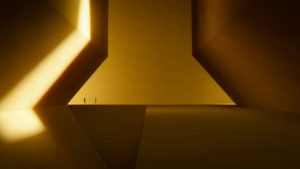
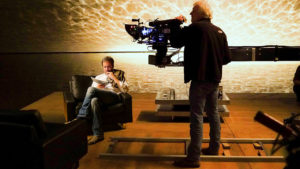
Lanterne rosse
As we have seen, there are films in which the environment is masterfully used to communicate a particular message, whether positive or negative. In these situations, the use of wide-angle lenses often becomes fundamental. That was the case with Zhang Yimou’s “Red Lanterns” in 1991.
(SPOILER ALERT!)
The protagonist of this story, due to family problems, decides to become the concubine of a rich man. The girl is helpless in the face of her fate.
In this film, the scenic elements take on a very important value. The castle in which she is forced to live is highlighted by horizontal and vertical lines arranged in perfect symmetry, placing the protagonist in the centre. This generates a sense of claustrophobia and imprisonment, sensations felt by both the protagonist and the viewer.
At the end of the film, the woman, crazy for having seen the murder of another concubine, wanders around the castle courtyard. The last scenes are fundamental: the shot moves from a close-up on the girl to a long shot and the environment takes up more and more space within the scene, becoming more and more oppressive.
It becomes even clearer that the girl has no escape way.
This is what we mean when we talk about an environment that becomes a co-star!
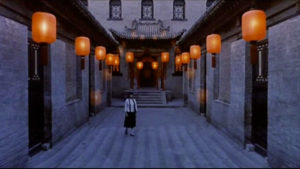
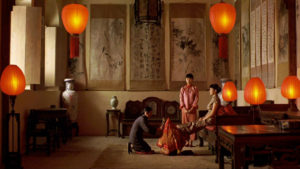
The tree of life
There’s so much to say about this film and the director who directed it.
Terrence Malick is a director who uses wide angle lenses in most of his films. As his career progressed, he collaborated with cinematographer Emmanuel Lubezki, who often chooses to shoot his films in natural light.
The use of wide angle shots is also strongly present in this film. These make us viewers feel involved in the story of the main family. There are many takes where the camera gets very close to the subjects, almost as if it wanted us to get in touch with them and be 100% involved in the scene we are seeing.
The tree of life is a film that simply enchanted us. We will certainly dedicate a whole article to Malick (stay tuned!).
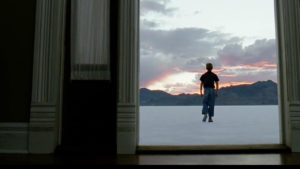

In Cinema, a world we love and that will never stop fascinating us, there are many elements that contribute to the final performance of a movie: the story, the emotions it evokes, the technique of making it…
Choosing a lens while being aware of the effects it will have on the viewer gives us an extra chance to get to the viewer’s heart.
The wide angle lens is just one of the many means that help to create creative, artistic and experimental film, video and photographic products. Of course, the aspect of personal taste also comes into play.
And what do you think about this?
Thanks for reading!
